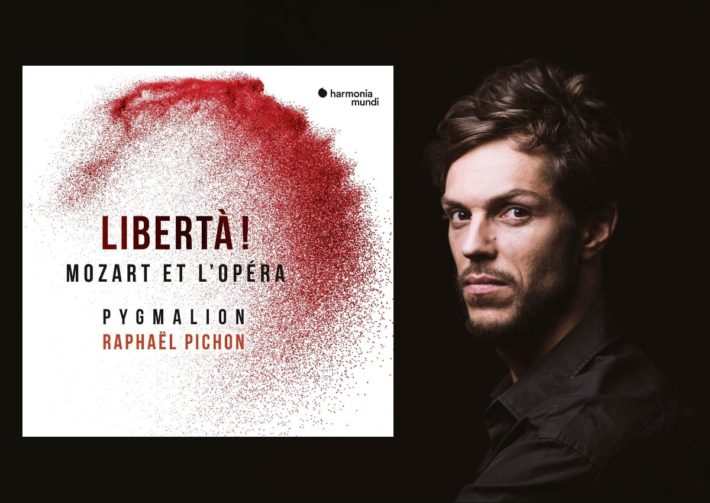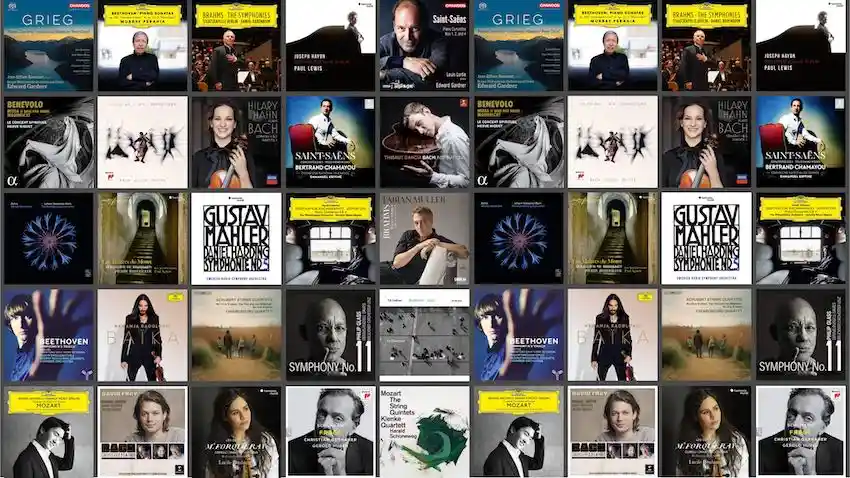Image: ©️ Igors Studio
In their latest release entitled “Libertà!”, Pygmalion with conductor Raphaël Pichon explore unfamiliar repertoire from Mozart and three of his contemporaries. Through a selection of operatic extracts, unused Mozart material, concert arias and miscellaneous pieces, they construct an operatic fantasy in three “tableaux” or acts, creating a vision of a complete opera. Through the musical selection one can draw the parallels between Mozart’s early works and the later refinement of the pinnacles of his operatic repertoire. Pichon and Pygmalion devise a tentative narrative, linking the three acts. Six solo singers – Sabine Devieilhe, Siobhan Stagg, Serena Malfi, Linard Vrielink, John Chest and Nahuel di Pierro – take on the roles of different characters in each act.
“La folle giornata” or ‘The crazy day’ is the first act, set in a count’s castle, and is a pastiche of the “Marriage of Figaro”. The opening sequence is taken from the incomplete opera “Lo sposo deluso (K.430). In the overture, Pichon recognises the similarities with the Figaro overture and paces the climaxes with conviction. The quartet that follows featuring Stagg, Malfi, Vrielink and di Pierro is one of several impressive ensembles on the album, which have a strong sense of unity and formidable balance. There are two notable arias in this opening sequence of music – “Dove mai trovar qual ciglio?” (Track 3) and “Saper bramate” (4). The first is given a characterful rendition by Crest and the latter, taken from Giovanni Paisiello’s “Il barbiere di Siviglia”, is sung by Vrielink, who’s lyrical voice captures something of the comparable innocence in the strikingly similar Cherbunio’s aria, “Voi che sapete che cosa è amor”, from the “Marriage of Figaro”.
Get periodic updates about new classical music albums reviews, news and guides.
We respect your privacy.
The second act, “Il dissoluto punito” (“The corrupt punished”), is set in Spain. Opening with a dramatic, superbly played “overture”, this orchestral extract is from act 1 of Mozart’s instrumental music to “Thamos, König in Ägypten” (K.345). Similarities to the “Don Giovanni” overture are obvious. This is followed by the first of two sextets, the first by Vicente Martìn y Soler, which showcases the six solo voices with their exceptional complementary blend. In the centre of the ‘tableau’ are three concert arias. The first, “Vado, ma dove?” (15, sung by Malfi), is treated more operatically, but sound appropriate to the context here. Notable comparisons vary from the classic Dame Kiri Te Kanawa recording with György Fischer, or Magdelana Koźená’s period instruments take with Simon Rattle and the Orchestra of the Age of Enlightenment. The second concert aria — “Per pietà, non ricercate” (16, sung by Vrielink), is notable for the tenor’s excellent diction and sense of style, compared to Ronaldo Villaźon with Antonio Pappano who gives a significantly bolder performance. The final aria (17, “No, che non sei capace”) is the perfect piece for Devieilhe’s coloratura. Her voice is less dramatic than Natalie Dessay’s or Edita Gruberová’s, however, Devieilhe’s top notes have a warmer tone and softer sound which matches the orchestral character of Pygmalion beautifully. The second sextet from Mozart’s “L’oca del Cairo” follows, further confirming the thee soloists’ abilities to blend eloquently.
“La scuola degli amanti” (“The school for lovers”) is the third and final act, containing all the capricious energy one would expect in “Così Fan Tutte”. The energetic overture from “Der Schauspieldirektor” (K.486) opens this “tableau” with its echoes of the “Jupiter” symphony. The central piece in this sequence is a commendable highlight — the sextet that closes act 1 of Antonio Salieri’s “La scuola de’ gelosi” (CD 2, track 6).
In the insightful interview from the booklet, Pichon describes Pygmalion’s approach to music exploration as looking into the “nooks and crannies” of the great composers. They give a fascinating insight into Mozart’s craft and the gestation of the da Ponte operas, which are pinnacles of classical operatic repertoire. They shine the torch of enlightenment on the context of the burgeoning appetite and development for opera buffa and seria during the relatively liberal reign of Joseph II. However, listeners familiar with Mozart’s operas will long for the likes of René Jacobs’ Marriage of Figaro, Yannick Nézet-Séguin’s Don Giovanni or Teodor Currentzis’ “Così Fan Tutte”, intriguing as this new album may be. Nonetheless, there is an authoritative sense of authenticity in this imaginative and captivating album, despite the artificially created narrative. What prevails throughout is the intrinsic sense of style, attention to detail, blends of voices and the unified and balanced orchestral sounds. Very approachable and highly enjoyable overall.

Librayà – Mozart et L’Opéra
Sabine Devieilhe – Soprano
Siobhan Stagg – Soprano
Serena Malfi – Mezzo
Linard Vrielink – Tenor
John Chest – Baritone
Nahuel di Pierro – Bass
Pygmalion
Raphaël Pichon – Conductor
Harmonia Mundi, CD HMM 902638.39
Albums Mentioned In This Review
Follow Us and Comment:
Get our periodic classical music newsletter with our recent reviews, news and beginners guides.
We respect your privacy.









